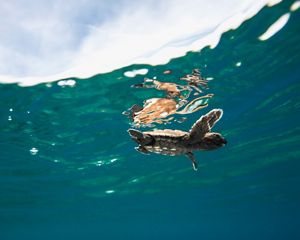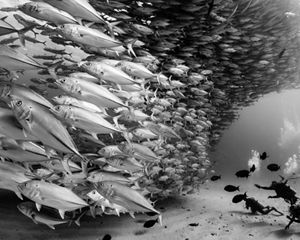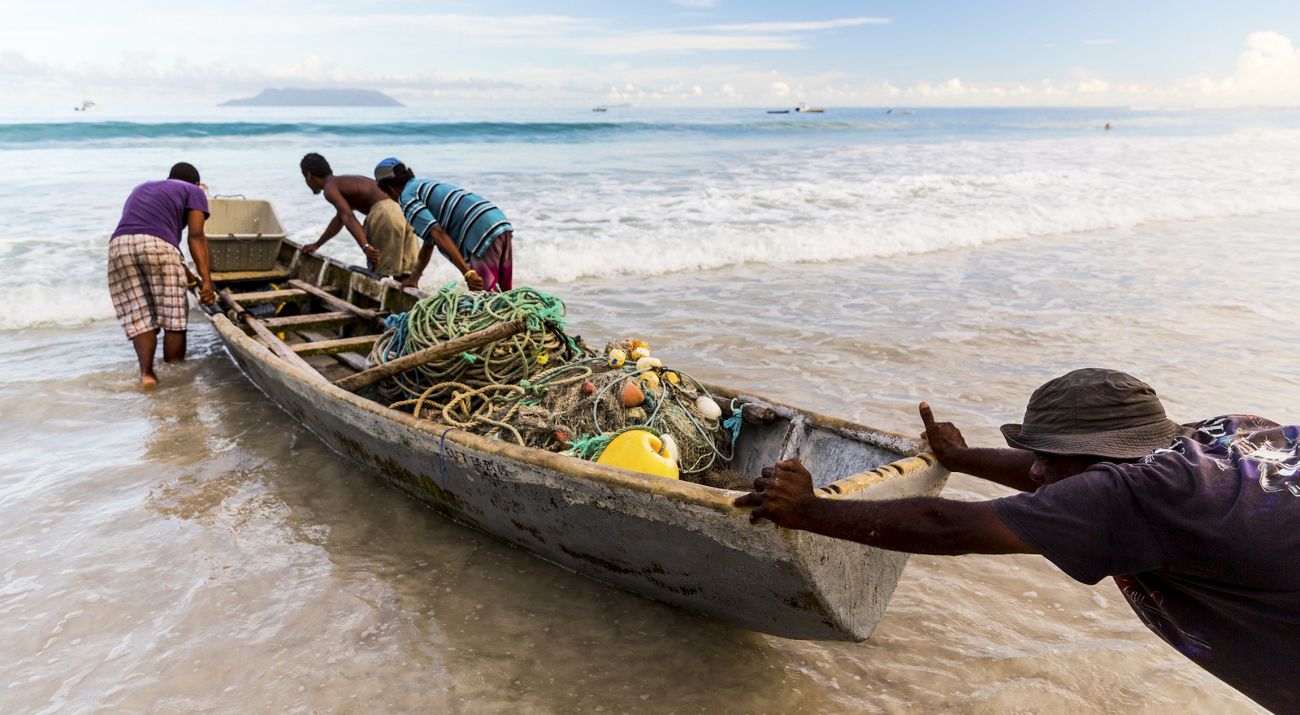
Seychelles Achieves 30% Marine Conservation Commitment
New protections come from world’s first debt refinancing for ocean conservation.
Curious sea turtles and one-of-a kind dugongs glide confidently through the clear ocean waters. On land, giant tortoises slowly tear leaves off low-hanging branches to make their lunch. Above, delicate white terns hover against a perfect blue background of sky.
The small island nation of Seychelles, which sits about 1,600 kilometers off the coast of East Africa, is truly an ecological paradise. But, as the world changes, so too will the challenges faced by its endangered and endemic species, as well as the country’s 100,000 residents who depend on their marine resources.
On March 26, 2020, Seychelles announced the final details of Marine Protection Areas to reach its goal to protect 30% of its ocean. As part of the ground-breaking debt conversion deal co-designed by The Nature Conservancy, Seychelles committed to increasing its marine protection from just 0.04 percent of its Exclusive Economic Zone to a full 30% by 2020. Now, 410,000 square kilometers (158,000 square miles)—an area larger than Germany—will be fully or significantly safeguarded to encourage sustainable development and to adapt to the effects of climate change.
Protecting Paradise and Supporting Livelihoods
The protected areas are split into two zones. High Biodiversity Protection Areas (Zone 1) restrict almost all human activities except non-extractive uses, like tourism, and include 201,235 square kilometers (77,700 square miles) of waters around the remote islands of the Aldabra Group. The archipelago includes the world’s second-largest raised coral atoll—a UNESCO World Heritage Site—that, like the Galapagos, is a window into evolutionary processes in an ecosystem barely touched by human activity. It is home to the most endangered animal in the western Indian Ocean—the dugong—and 100,000 rare giant tortoises.
There are also Medium Biodiversity Protection and Sustainable Use Areas (Zone 2) designed to conserve natural ecosystems and support sustainable economic activities, including catch and release fishing, tourism charters and renewable energy. This protection category is to safeguard species and habitats and ensure economically important enterprises can support local livelihoods and have the marine resources they rely on. This zone includes 217, 5489 square kilometers (84,000 square miles) around the Amirantes Group and Mahé Plateau, a key area for seagrass beds, tuna and supporting the local economy.
As a large ocean state, the people of Seychelles depend on a healthy, thriving marine ecosystem. Jobs in the fishing and tourism industries employ more than one-third of the country's workforce and thus are addressing illegal fishing and developing best-in-class sustainable fisheries. The reliance on marine resources means that Seychelles and other oceanic nations are among the most vulnerable to climate change. But, with large areas under increased protection and effective management, Seychelles will be better prepared for the uncertain effects of warming and rising waters, ocean acidification and adaptation.
Explore Seychelles
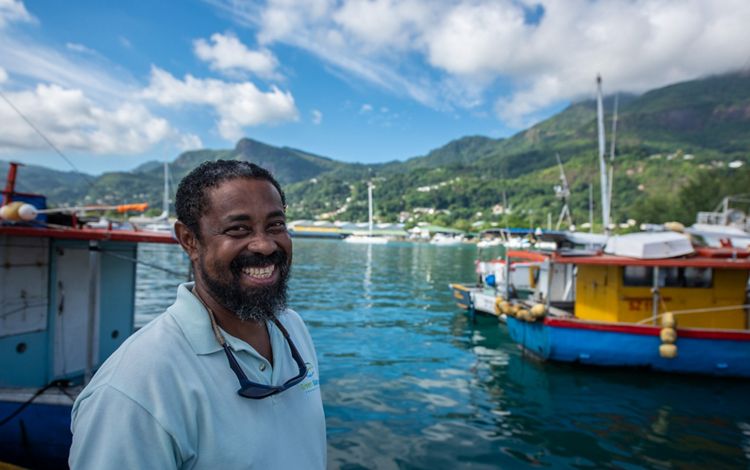
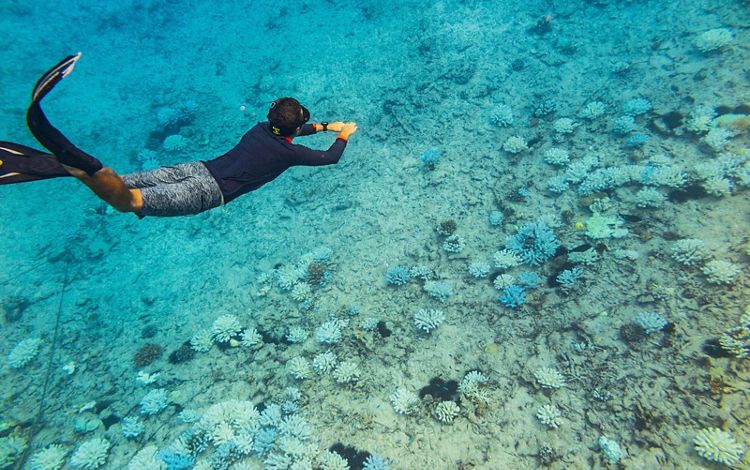
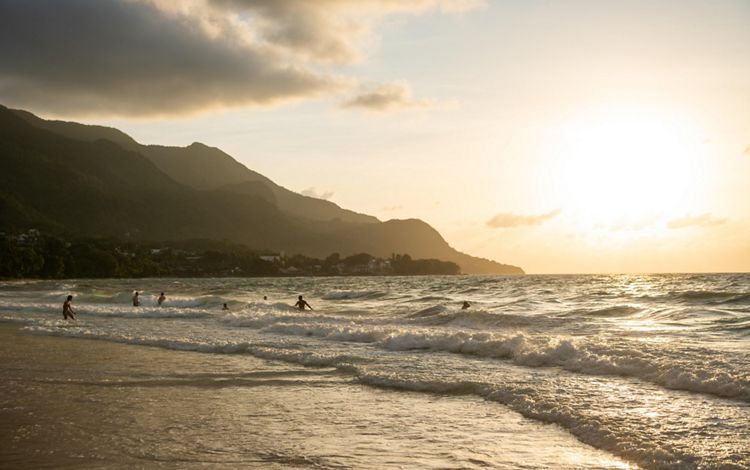
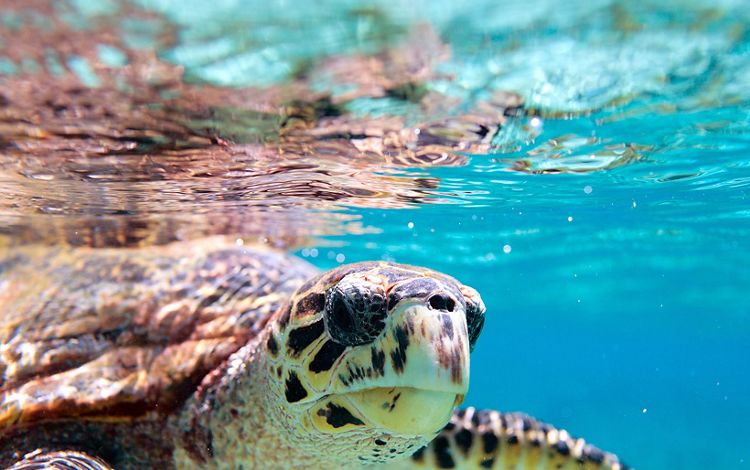
World's First Ocean Debt Conversion
Seychelles’ commitment to increase the protected area of its ocean from 0.04% to 30% by 2020 came out of a groundbreaking debt conversion co-designed by the government of Seychelles and TNC. The world’s first ocean debt conversion resulted in a $21.6 M payment of a foreign debt in exchange for in-country financing for long-term conservation and commitment to develop a marine spatial plan that included the 30% goal. The Seychelles Conservation and Climate Adaptation Trust (SeyCCAT) is an independent private trust formed in 2016 that disburses blue grants funded by the debt conversion, and other recent financing opportunities in Seychelles, to support ocean conservation and implementation of the Plan. For example, watch how Green Islands Foundation is working with artisanal fishers to identify and develop management solutions for fish species they noticed were on the decline.
The financial transaction of the Seychelles’ debt conversion was made possible with the support of private funders, including the Jeremy and Hannelore Grantham Environmental Trust, Leonardo DiCaprio Foundation, Lyda Hill Foundation, Oak Foundation, Oceans 5, Turnbull Bernstein Family Charitable Fund and Waitt Foundation. Collaborators on the initiative include the governments of Belgium, France, Italy, the Republic of South Africa and the United Kingdom of Great Britain and Northern Ireland, United Nations Development Program, Global Environment Facility and Global Island Partnership.
Seychelles is a Model for the World
Critical to the success and completion of this deal was creating a Marine Spatial Plan (MSP). The government of Seychelles leads this initiative with planning, science and facilitation provided by TNC, with support from GOS-UNDP-GEF Program Coordinating Unit.
The MSP is designed to protect Seychelles’ ecological assets at the same time as allowing its “Blue Economy”—businesses that rely on ocean resources—to continue in a sustainable manner for generations to come. The MSP covers all 1.4 million square kilometers of Seychelles’ territory and is the second-largest area of ocean in the world to be covered by such a plan.
These decisions were not made lightly: more than 200 stakeholders were consulted during the planning over the last six years and their input and views on which activities should be allowed, and where, form the backbone of the plan. The planning process included at least 210 meetings, consultations and workshops—including 52 in 2019 alone—with marine sectors, local experts and agencies over the course of several years.
When managed properly, ocean and marine resources have the ability to simultaneously support thriving ecosystems, economic growth and resilient communities. This incredible achievement in Seychelles is a testament to how investing in nature now helps governments and local communities in the future. And the potential scale is even greater—TNC estimates that up to 85 countries could use a similar model to develop more resilient economies through marine conservation, opening the door to even greater ocean protection.
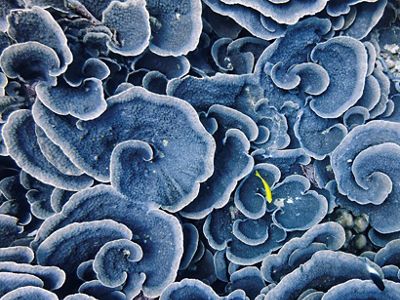
About NatureVest
In 2010, The Nature Conservancy launched its impact capital strategy with support from the Robertson Foundation which continues today, and built a global network with subsequent support from the Jeremy and Hannelore Grantham Environmental Trust. In early 2014, with founding sponsorship from JPMorgan Chase & Co., TNC launched NatureVest as a concerted effort to change the way we invest in nature. JPMorgan Chase provides strategic input to NatureVest research, investor outreach, market analysis and structuring conservation investments.
